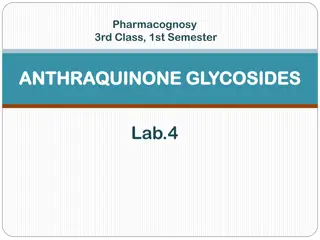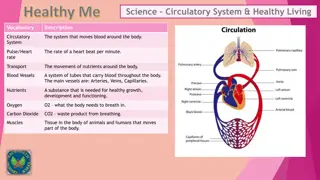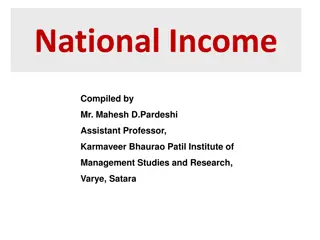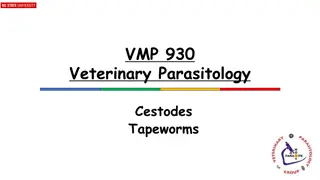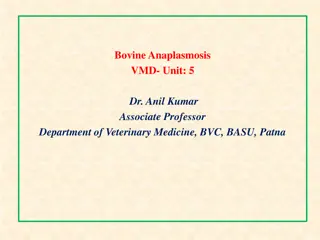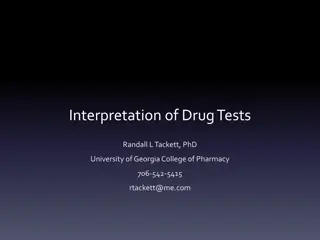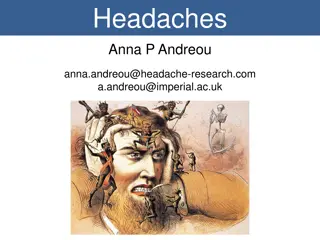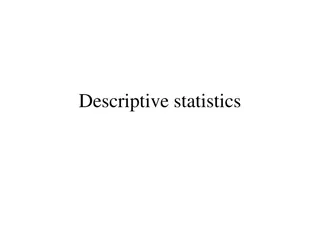Understanding Anthraquinone Glycosides: Pharmacognosy Insights
Anthraquinone glycosides are compounds found in medicinal plants like Senna, Cascara, and Aloe, known for their therapeutic actions. These glycosides are hydrolyzed to yield active aglycones, which act as stimulant cathartics by increasing smooth muscle tone in the colon. Market formulations and extraction techniques for anthraquinone glycosides, particularly from Senna plants, involve maceration with 70% ethanol and subsequent chloroform partitioning. The discussion delves into the separation process of aglycones and glycosides using ferric chloride and hydrochloric acid.
Download Presentation
Please find below an Image/Link to download the presentation.
The content on the website is provided AS IS for your information and personal use only. It may not be sold, licensed, or shared on other websites without obtaining consent from the author. Download presentation by click this link. If you encounter any issues during the download, it is possible that the publisher has removed the file from their server.
Presentation Transcript
Pharmacognosy 3rd Class, 1st Semester ANTHRAQUINONE GLYCOSIDES ANTHRAQUINONE GLYCOSIDES Lab.4
Anthraquinone glycosides are anthracene derivatives most of them contain anthraquinone skeleton.
Glycosides of anthranols, dianthrones, and oxanthrones have significant therapeutic action. The glycosides, upon hydrolysis, yield aglycones that are di-, tri-, or tetrahydroxyanthraquinones or modifications of these compounds. Mechanism Mechanism of They employed as stimulant cathartic which exert their action by increasing the tone of the smooth muscle in the wall of the colon and stimulate the secretion of water and electrolytes into the large intestine (bulk laxatives). of action action
Medicinal plants that contain Anthraquinone glycoside : 1-Senna 2-Cascara 3-Frangula 4- Aloe 5-Rhubarb Drug of choice not recommended due to their irritating action. Aloe use in the treatment of minor burns
Senna Senna
Sennoside Sennoside :anthraquinone glycoside of senna plant in which the aglycone part is dimer of anthrone (dianthrone) .
Market formulation Market formulation
Extraction OF Anthraquinone glycosides (Senna) Macerate the powdered plant material with 70% ethanol After filtration Place the filtrate in separatory funnel and shaking with same quantity of chloroform 1x2 Fraction(A) Organic layer Fraction(B) aqueous layer mix few amount of fraction B then add FeCL3 and dilute HCL on water bath for about10 min. Partion with chloroform Fraction(c) Organic layer Fraction(d) aqueous layer
Discussion Discussion The chloroform layer will contain the free aglycone (fraction B) , while the aqueous layer will contain the glycoside as a whole , since sugar is water soluble (fraction A) . The use of ferric chloride and HCL and reflux is to break the C-C bond in the dimmer, which is very strong bond so need strong conditions.
Borntragers Borntragers test for test for anthroquinone anthroquinone -Hydrolysis the glycoside with acid and heating to form free aglycone and sugar parts - mix with chloroform in separatory funnel to take free aglycone(free anthraquinone) -Then in test tube mix 5ml of chloroform layer with aqueous KOH or dilute ammonia to form two immiscible layers -A pink to red color produced in the alkaline layer indicate the presence of free anthraquinone


